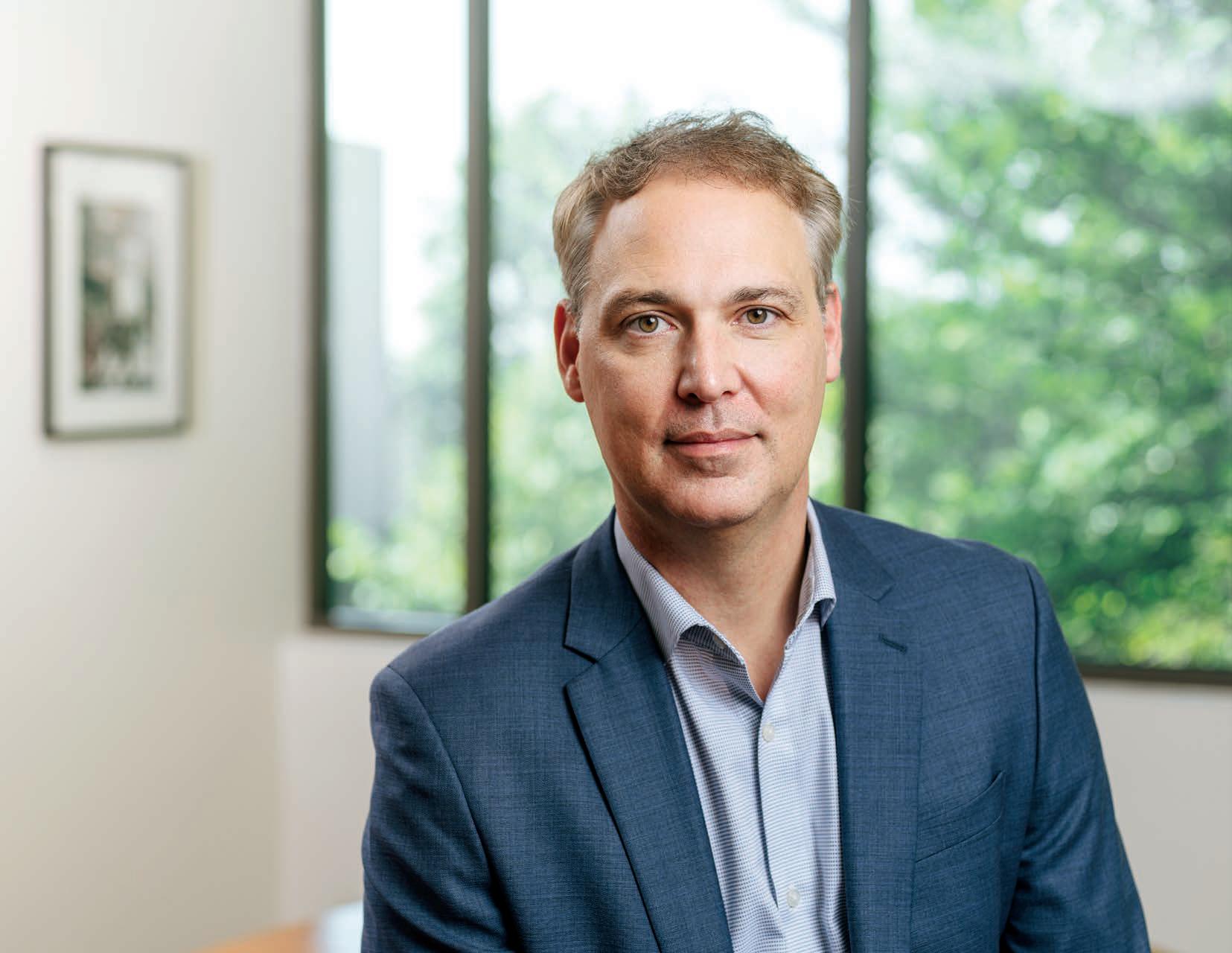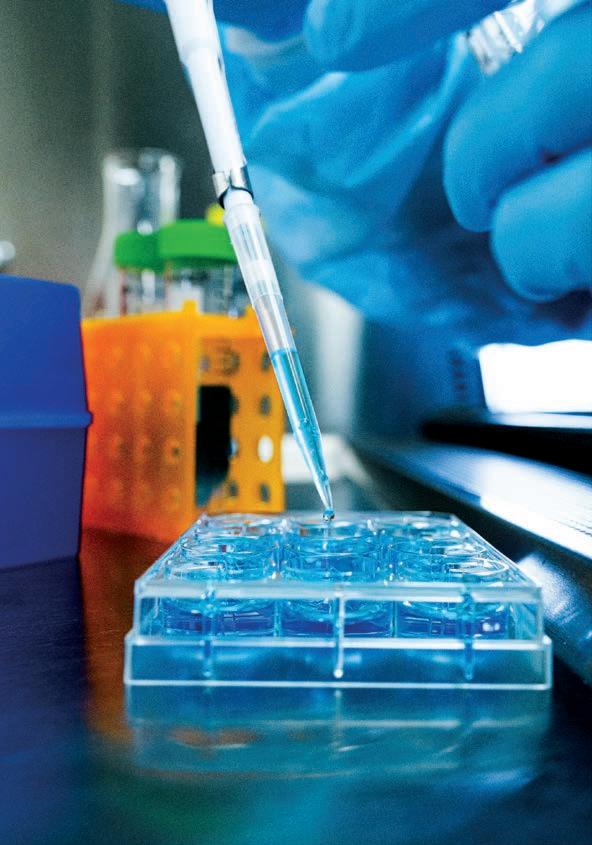
4 minute read
GROWING INNOVATION AND ENTERPRISE
BUSINESS DEVELOPMENT
TEXAS BIOMED ESTABLISHES NEW DIVISION OF INNOVATION AND STRATEGIC PARTNERSHIPS
IN 2018, Texas Biomed released its 10-year strategic plan to grow and enhance its campus through recruitment, construction and the creation of new programs. One of the central goals was to expand the level of independent research that’s supported by the National Institutes of Health (NIH) and other sources of funding, as well as to increase contract activities with pharmaceutical and biotechnology companies. To help achieve that vision, the Institute recruited Cory Hallam, PhD, Vice President for Business Development and Strategic Alliances. Dr. Hallam, who has expertise in research and development management, production and commercialization, was brought in to lead efforts in innovation and strategic partnerships. He arrived at Texas Biomed on March 2, 2020. “I got here, and we immediately jumped in with all hands on deck to develop animal models for testing COVID-19 vaccines and therapeutics, and securing the funding to establish multiple animal models,” Dr. Hallam said. “This eventually led to more than $20 million of contract work in 2020, in addition to a plethora of NIH grants submitted related to the SARS-CoV-2 pathogen. Essentially, it was a crash course of doing in one year what we had planned to do over the next 10 years.”
The development of both rodent and nonhuman primate models of COVID-19 led to publications in many top journals. It also allowed Texas Biomed to attract some of the biggest companies in the world to use those models for challenge studies to evaluate vaccines and therapeutics. Two early collaborations were partnerships with Regeneron to test its monoclonal antibody therapy and with Pfizer-BioNTech to evaluate their COVID-19 vaccine, both of which received Emergency Use Authorization from the Food and Drug Administration in 2020.
“In addition to our contributions to combating COVID-19, a big part of what we did last year was expand global brand recognition for our science and use that status to drive broader recognition for the Institute and its capabilities,” Dr. Hallam said. “Our currency is truly the quality of our science. Our quality is the underlying theme that continues to build our reputation, whether from the viewpoint of the public, the research community, or industry.
Texas Biomed currently has active research and development contracts with more than two dozen pharmaceutical and biotechnology companies. The Institute also has built a complementary network of R&D partners that are generating new work on a global scale. Strong collaborations with nongovernmental agencies and international partners are also on the horizon for generating new work.
“We currently have an expanding portfolio of inventions being generated by our faculty,” Dr. Hallam said. “Combine this with increased visibility from industry
Cory Hallam, PhD
partners and we find ourselves at the nexus of a campus that can easily move from research-intensive discovery to real-time venture spin off or on-campus industry collaboration or co-location.”
The Institute aims to grow additional capabilities for manufacturing and commercial sales of compounds, antibodies, reagents and other tools it develops. This growth will lead to a range of working relationships, from additional contract work to opportunities for industry people to co-locate at Texas Biomed. These relationships will contribute to funding both basic research streams and translational technology development programs.
One of the first expansion efforts from the strategic plan started this year with a $4 million grant proposal submitted to the Economic Development Administration to kick off construction of a new multispecies primate facility on campus. Through additional fundraising and support, the Institute secured the additional resources needed to launch this $10 million project.
“For all the work we plan to do over the next decade, it’s absolutely necessary to increase our capacity to do multi-species primate research as well as to continue to expand, reinvigorate and renew our older facilities,” Dr. Hallam said. Texas Biomed is uniquely positioned to bridge the connections between basic science and more translational efforts. “The two feed off each other,” Dr. Hallam explained. “New discoveries and techniques feed into this pipeline of ideas and capabilities that industry will pick up on. Meanwhile, industry is coming to us with a prioritization of the needs they’re trying to meet in terms of new diagnostics, therapies and cures. We gain insight into future problems to tackle with basic research, and we deploy our new knowledge to enable the pre-clinical translation necessary for industry to move product to market. It is a positively reinforcing cycle that improves human lives.”
The COVID-19 pandemic was a challenge that everyone at Texas Biomed faced with an incredible level of dedication, Dr. Hallam noted. Despite taking on a huge amount of new work, the Institute managed to succeed in these efforts with existing research staff and faculty who still labored tirelessly to maintain their existing research programs. “Everything Texas Biomed accomplished in 2020 was done on the shoulders of our current team,” he said. “This work got absorbed by our investigators who were willing to take time away from their ongoing research activities to tackle these problems. It should be a source of pride for Texas Biomed for decades to come that everyone quickly came together from across so many disciplines and leaned in to support these vital efforts.”









